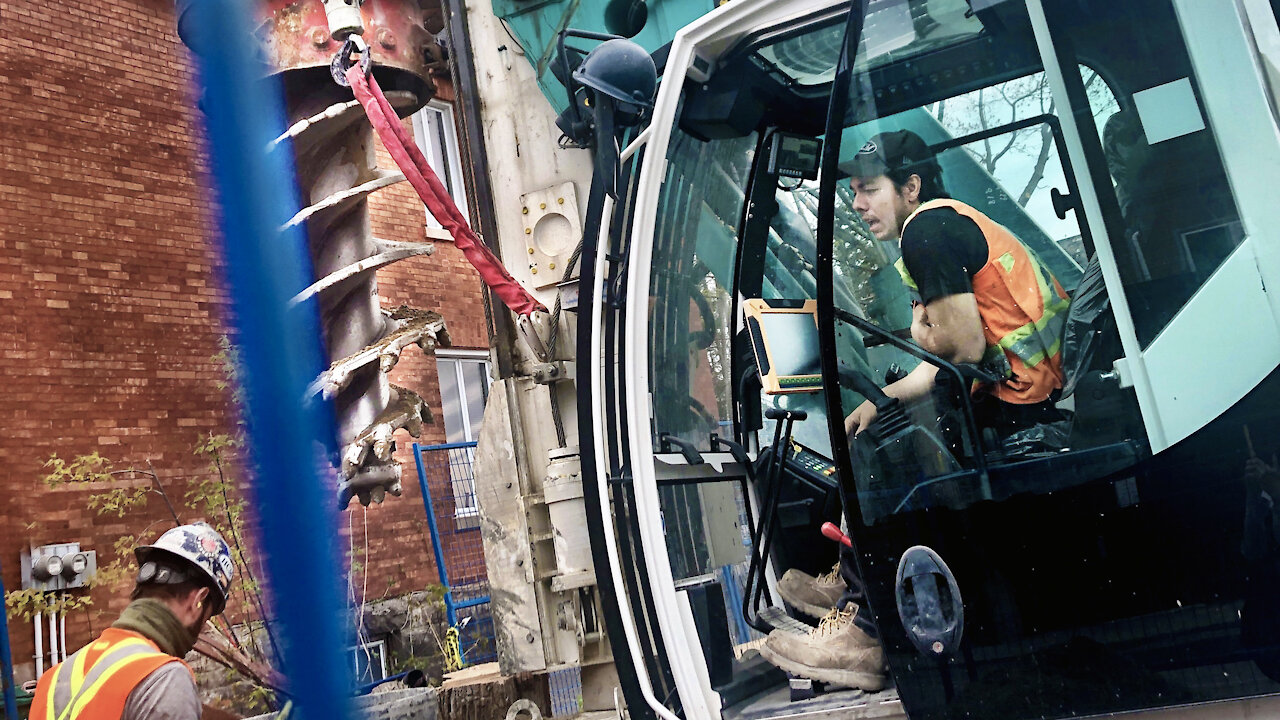Premium Only Content

RABBITS aren’t the only HOLE DIGGERS!
This is what the beginning of new building construction looks like. That is, after they’ve flattened whatever was there before. This is in Ottawa, Canada in late April. Need some holes dug? Let me introduce you to the Post Hole Auger. It’s a piece of equipment that drills into soil to create an exact, vertical hole for posts, trees and is occasionally to take soil samples.
This kind of tool is beneficial because it reduces the amount of strain required to dig a large hole. Holes needed for fences and housing foundation can often be several feet wide and very deep. Certain types of soil, such as clay-based soils, are hard-packed and dense. They usually call for a great amount of force to move the earth and create a hole when digging by hand. This machine operates by turning a spiral drill-head into the soil. The drill-head is typically made of steel.
And because I know you love trivia, let me tell you about five of the deepest holes we humans have ever dug!
1. Russia: The Kola Superdeep Borehole is 7.5-miles deep. Started in 1970 by Russian scientists and ultimately becoming the deepest hole in the world—deeper than even the deepest part of the ocean—after about 20 years of digging. The 356 Fahrenheit temperature at that depth, however, made it impossible for tools to keep going. The site has been abandoned since 2008, and the hole bolted shut so nothing can get in. … or out!
2. Utah: The Bingham Canyon Mine, over 100 years old, is the world's largest copper mine and is considered the largest man-made excavation. It dips nearly three-quarters of a mile down and covers 1,900 acres. First started in 1906, the mine is still open, but that hasn't kept it from being named a National Historic Landmark with a visitor center for folks who want to come and gawk.
3. Africa: The Kimberley Diamond Mine, “The Big Hole”, is one of the largest hand-made holes in the world. More than 50,000 miners have been pick-axing their way into the soil since 1866. More than 6,000 pounds of diamonds have been pulled from it.
4. Canada: The Diavik Diamond Mine opened in 2003 in the Canadian Arctic, and it has reached deeper than 600 feet. The mine is accessible only by plane—there's a gravel runway big enough for a Boeing 737—and an ice road. And that's only if the weather is good enough. The mine yields 3,300 pounds of diamonds annually amidst the ice.
5. Montana: The Berkeley Pit opened in 1955 to mine for copper in Butte, Montana. The pit grew to a depth of 1,700 feet before it was closed down in 1982. Since that time the pit has filled with over 900 feet worth of groundwater and rainwater.
-
 0:33
0:33
AmplifiedLIFE
8 months ago $7.40 earnedIncredible footage of a woodpecker pecking on a tree
1461 -
 44:18
44:18
WhiteLightHealer
3 years agoRabbits, Rabbits Everywhere!
23 -
 2:12
2:12
voeun
3 years agoHome rabbits
15 -
 1:58
1:58
Fun And Funny Today
3 years agoCuddling rabbits
20 -
 0:37
0:37
Animal Time
3 years agoMY CUTIE RABBITS
32 -
 56:02
56:02
Uncommon Sense In Current Times
2 hours ago $1.02 earned"Are You a House Negro Or a Field Negro? A Faith Perspective on Freedom with Kevin McGary"
21.2K2 -
 17:53
17:53
DeVory Darkins
5 hours agoThe View SELF-DESTRUCTS as Kamala CONCEDES Election
48.1K109 -
 1:59:12
1:59:12
vivafrei
6 hours agoLive with the Gad Saad! Talking "Suicidal Empathy" and the Post-Election Liberal Meltdown! Viva Frei
76.8K25 -
 1:02:41
1:02:41
Josh Pate's College Football Show
4 hours ago $3.88 earnedWeek 11 Upset Alerts | Florida Keeping Billy Napier | The Playoff Bubble | Cole Cubelic
42.7K -
 17:03
17:03
Bearing
5 hours ago2024 Election MELTDOWN! Woke Trump Derangement Hysteria
32.2K53